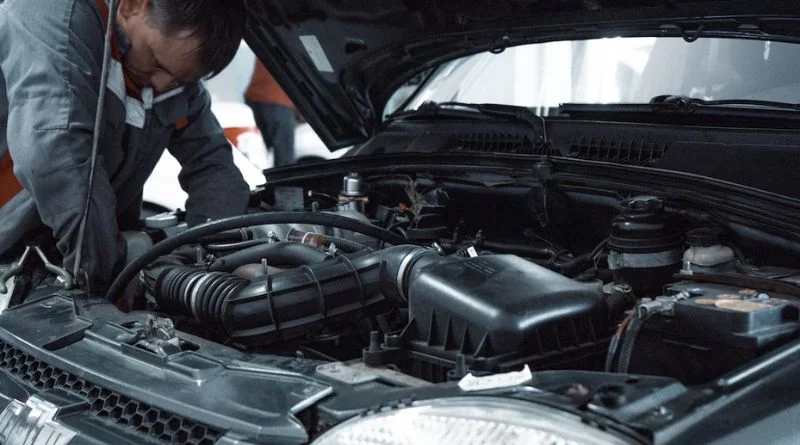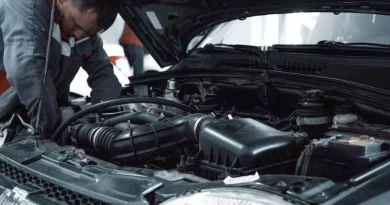The Best Vehicle Maintenance Tips for Staying Safe on the Road
Last updated on July 19th, 2024 at 05:19 am
Keeping your vehicle in working order is the best way to prevent accidents.
The last thing anybody wants to hear while driving is a strange noise followed by an abrupt breakdown of their vehicle. Not only is this dangerous to you on the road, it’s also dangerous to your wallet when you take your vehicle into the shop. A person can’t control other drivers on the road, but taking steps to prevent mechanical breakdowns is within your control and can reduce the risk of car accidents.
The Importance of Preventative Maintenance
For those who have never heard the term, preventative maintenance is the action of minor and routine check ups and repairs on a consistent basis to avoid major breakdowns in the future. Some common examples of preventative maintenance tasks include: replacing the fluids under the hood, inspecting your vehicle for any visible damage, tackling seasonal maintenance, and more.
Every driver should create a preventative maintenance schedule for their vehicle that includes checking on some of the most important parts under the hood on a consistent basis. Despite the fact that your airbags inflate in under 1/20th a second, a car accident at any speed is extremely dangerous. By handling preventative maintenance, you can identify and fix small issues under the hood that may have become a larger problem in the future, thus saving you time and money in the long run.
How to Keep Your Vehicle Protected on the Road
While preventative maintenance can differ from vehicle to vehicle, the principle remains the same: avoid and protect against serious breakdowns. Most experts recommend having your car fully checked out by a qualified mechanic every 12 months, but the majority of preventative maintenance can actually be handled by the driver of the vehicle.
Follow the recommended maintenance schedule
Manufacturers provide car owners with a maintenance schedule for a reason. This schedule is designed at key intervals when certain parts under the hood may begin to experience some wear and tear, or when fluids begin to get low. It’s best to follow this recommended schedule as part of your preventative maintenance routine, as most of the parts mechanics will look at are complicated to the untrained eye.
Get your oil changed
If the engine is the heart of your vehicle, oil is the blood. Your car cannot run without oil which makes replacing it in a timely fashion one of the most important preventative maintenance tasks. In the past, replacing oil every 3,000 miles was the general recommended guideline. However, technology has advanced greatly in recent years and the new interval for oil changes is every 7,500-10,000 miles on average. Refer to your vehicle’s manufacturer booklet for the exact number of miles for your specific make and model.
Rotate your tires and check air pressure
Rotating your tires on a consistent basis helps to ensure even wearing of the treads. This can help your tires last far longer and save you thousands by taking away the need for new tires. Additionally, always ensure your tire air pressure meets the specifications outlined by your user manual. For most vehicles, this value will range from 32 to 35 psi.
Check all fluid levels under the hood
Oil is just one of many fluids that your vehicle needs to run properly. Windshield wiper fluid, coolant, transmission fluid, brake fluid, power steering fluid, and more are all examples. Each of these fluids have different replacement intervals, which is partially why taking your vehicle in for maintenance at the recommended time is so important. While some of these, such as coolant, can be measured on your own, the majority take a professional’s eye.
Replace windshield wipers
Regardless of whether you live in a location with torrential downpours or light winters, replacing your windshield wipers regularly can help prevent accidents. Old or damaged wiper blades can reduce visibility during poor weather by simply smearing dirt or not clearing all water off your windshield. Avoid this loss of visibility by changing your blades every six to twelve months, varying depending on where you live.
Inspect your brake pads for wear and tear
It goes without saying that the brakes of a vehicle are one of the most important components. Brake pads work contracting vehicle rotors, which creates friction and slows your vehicle. Over time, brake pads wear down from this friction and a car’s ability to slow is impacted when this occurs. You can see your brake pads in your tires, in most cases, allowing a visual inspection of the wear and tear to go on your preventative maintenance list.
Protect your vehicle and yourself
Staying safe on the road is about more than defensive driving. Preventative maintenance can help keep the parts under your hood in working order, which will keep your vehicle running smoothly during your drive. If there is any part or component under the hood that you aren’t sure about, don’t hesitate to take your vehicle in to see a certified mechanic as soon as possible.




